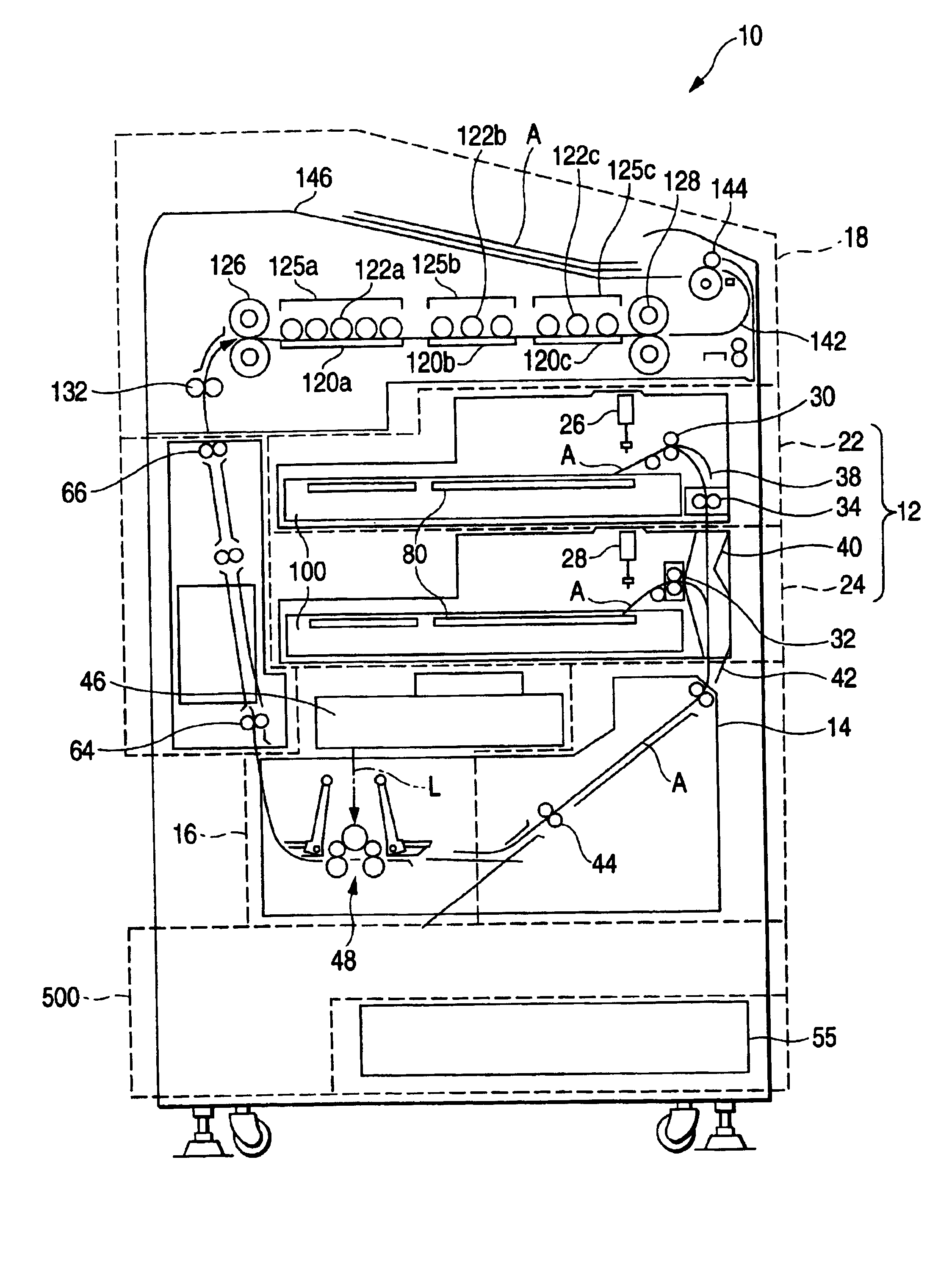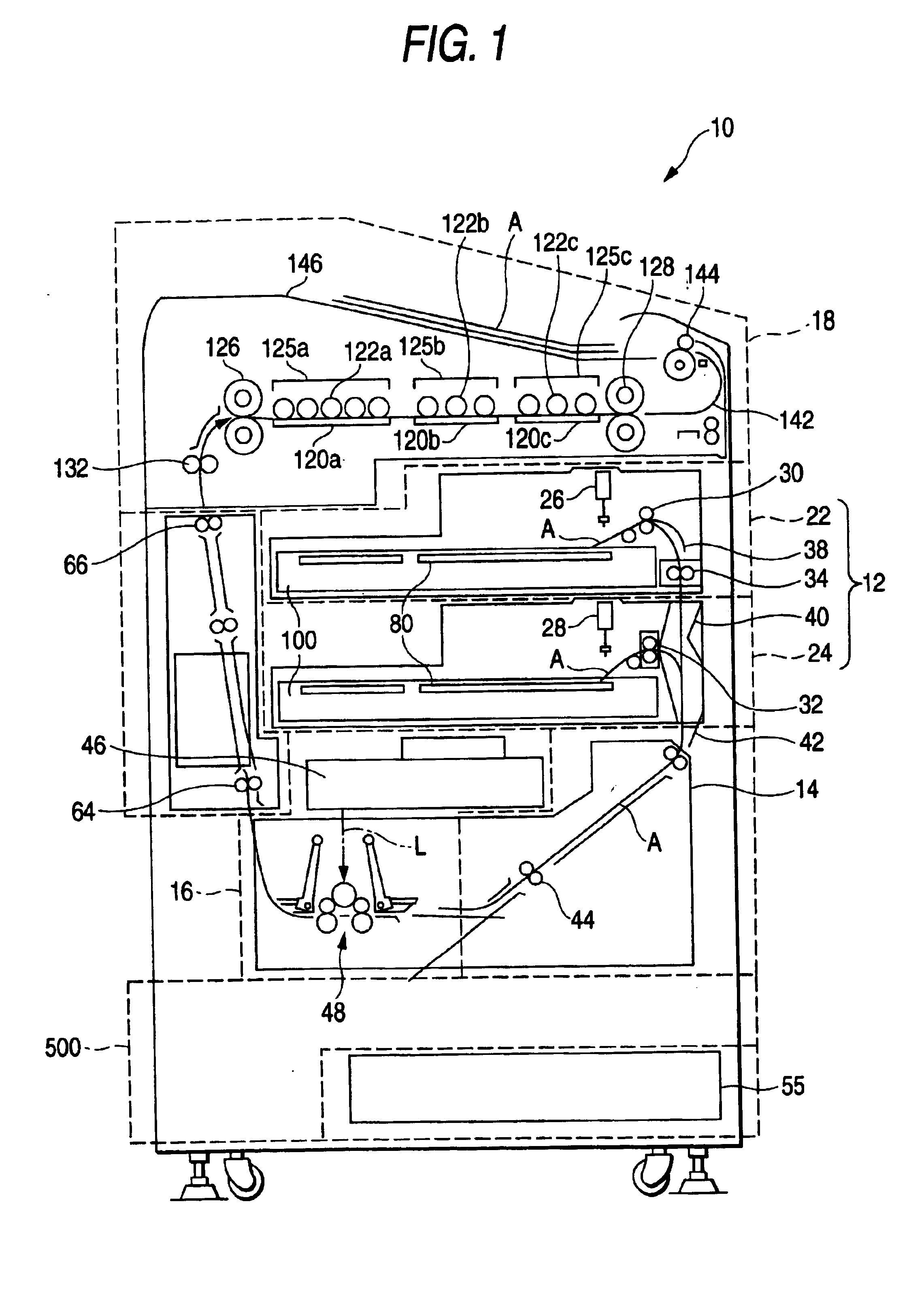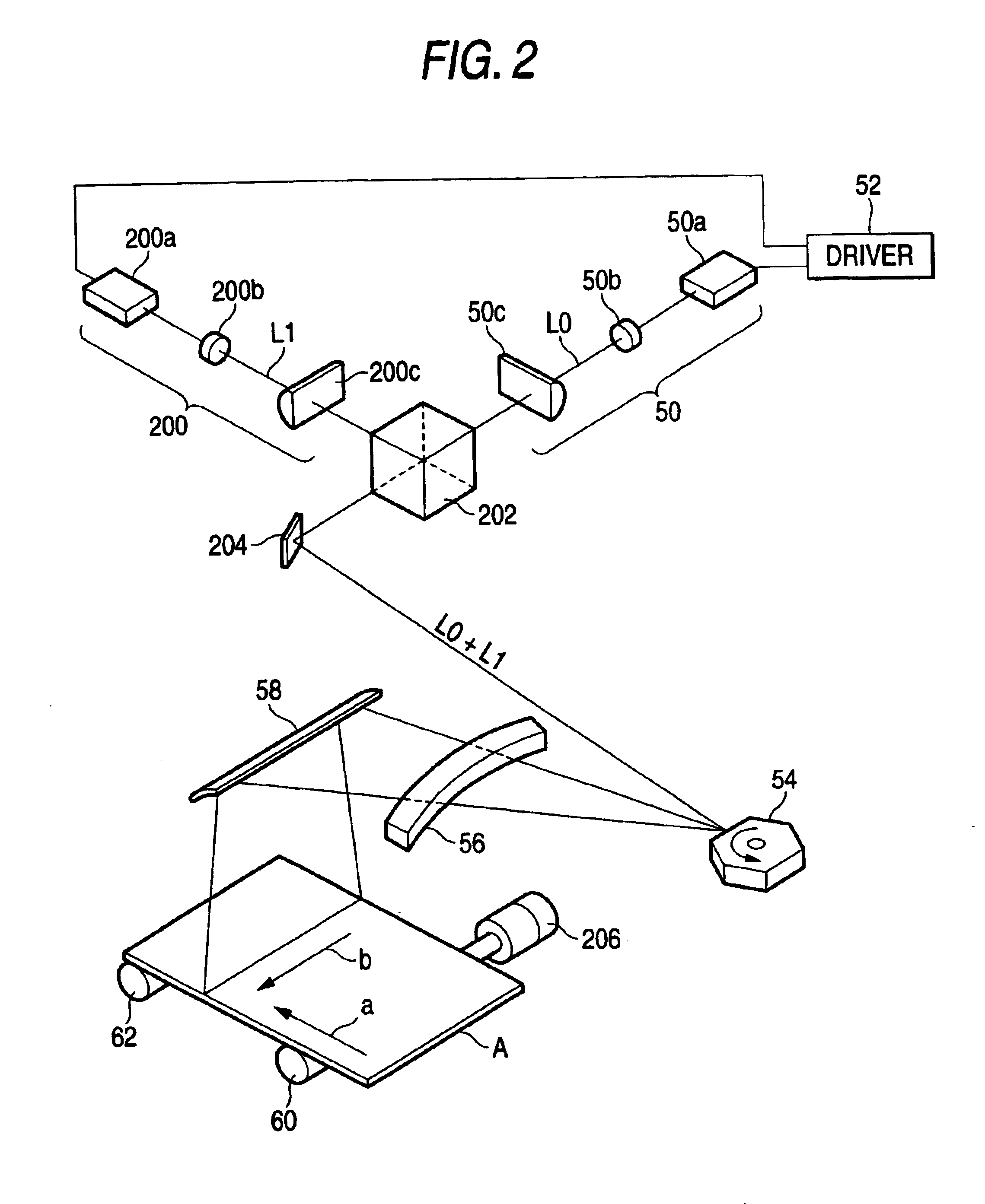Image formation on heat-developable light-sensitive material and image forming apparatus
a technology of heat-developable light-sensitive materials and image forming equipment, which is applied in the direction of photosensitive materials, printers, instruments, etc., can solve the problems of failure to design a sufficiently sensitive system, desensitization of spectrally sensitive heat-developable light-sensitive materials during storage, etc., and achieve high-density high-precision imaging or system size reduction, high image quality, and high sensitivity to ultraviolet radiation.
- Summary
- Abstract
- Description
- Claims
- Application Information
AI Technical Summary
Benefits of technology
Problems solved by technology
Method used
Image
Examples
example 1
1) Preparation of PETP Support
[0353]Polyethylene terephthalate (PETP) having an intrinsic viscosity IV of 0.66 (measured in phenol / tetrachloroethane=6 / 4 at 25° C.) was prepared from terephthalic acid and ethylene glycol in a conventional manner. PETP was pelletized, dried at 130° C. for 4 hours, melted at 300° C., and mixed with 0.04% of dye BB shown below. The molten mixture was extruded through a T-die and quenched to obtain an unstretched film which would have a thickness of 175 μm after biaxial stretch and heat set.
[0354]The film was stretched 3.3 times in the machine direction by means of rolls having different peripheral speeds and then 4.5 times in the transverse direction with a tenter at 110° C. and 130° C., respectively. The biaxially stretched film was heat set at 240° C. for 20 seconds, followed by relaxation at the same temperature in the transverse direction. Both lateral edges were trimmed and knurled, and the film was wound under tension of 4 kg / cm2 into a roll.
2) C...
example 2
[0405]Silver halide emulsions-2, -3, and -6 having the uniform halogen composition shown in Table 1 were prepared in the same manner as for emulsion-1 of Example 1 except for changing the halogen composition. Light-sensitive materials were prepared by using these emulsions in the same manner as in Example 1 (designated samples 2, 3, and 6). The temperature condition in silver halide grain formation was controlled so that the resulting silver halide emulsion grains might have an average sphere-equivalent diameter of 40 nm.
example 3
1) Preparation of Silver Halide Emulsion-4 and Sample 4
[0406]To 1421 ml of distilled water was added 3.1 ml of a 1% potassium bromide solution, and 3.5 ml of 0.5 mol / l sulfuric acid and 31.7 g of phthalated gelatin were added to the solution. While stirring the mixture in a stainless steel reaction vessel at a liquid temperature of 32° C., solution A prepared by diluting 22.22 g of silver nitrate with distilled water to make 95.4 ml and solution B prepared by diluting 15.6 g of potassium bromide with distilled water to make 97.4 ml were added to the mixture at a constant rate over 45 seconds.
[0407]To the mixture were added 10 ml of a 3.5% hydrogen peroxide aqueous solution and then 10.8 ml of a 10% benzimidazole aqueous solution. Solution C prepared by diluting 30.64 g of silver nitrate with distilled water to make 187.6 ml was added to the mixture at a constant rate over 12 minutes. Simultaneously with this addition, solution D prepared by diluting 21.5 g of potassium bromide with ...
PUM
| Property | Measurement | Unit |
|---|---|---|
| emission peak | aaaaa | aaaaa |
| emission peak | aaaaa | aaaaa |
| diameter | aaaaa | aaaaa |
Abstract
Description
Claims
Application Information
 Login to View More
Login to View More - R&D
- Intellectual Property
- Life Sciences
- Materials
- Tech Scout
- Unparalleled Data Quality
- Higher Quality Content
- 60% Fewer Hallucinations
Browse by: Latest US Patents, China's latest patents, Technical Efficacy Thesaurus, Application Domain, Technology Topic, Popular Technical Reports.
© 2025 PatSnap. All rights reserved.Legal|Privacy policy|Modern Slavery Act Transparency Statement|Sitemap|About US| Contact US: help@patsnap.com



